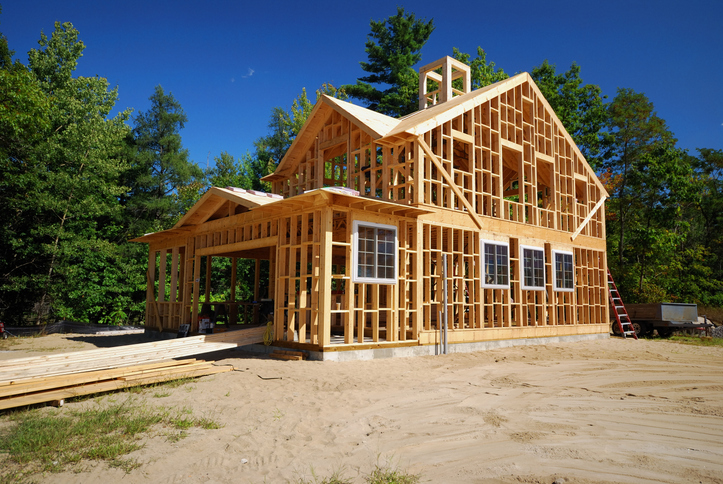
“Wood framing remains the most dominant construction method for single-family homes in the U.S.,” according to the National Association of Home Builders.
The NAHB analyzed 2022 Census Bureau data and found that 94% of new homes in 2022 were wood-framed, while 6% were concrete-framed and less than half a percent were steel-framed.
Approximately 956,000 wood-framed homes were constructed in 2022, which was a 7% increase from 2021. In the past three years, the market for wood framing has risen from 90% to 94%.
There are many benefits of wood framing compared to alternative options. Wood-framed houses are more energy efficient, require less insulation and are more affordable. Lumber is also commonly available, sturdy and won’t rust like steel does. Additionally, wood framing provides more efficient construction speed, sustainability and flexibility for potential remodels. These benefits make wood framing a versatile and popular option for both residential and commercial buildings.
On the other hand, concrete-framed homes are on the decline. Since 2020, “concrete-framed homes decreased 11% from 71,000 completions in 2021 to 63,000 in 2022,” according to NAHB. While concrete-framed homes typically have longer lifespans than their wood and steel counterparts, concrete building has a higher initial cost and is overall less common with fewer construction companies having the resources to build them.
With an approximate total of 3,000 steel-framed housing completions in 2022, the same as the year before, steel framing has neither increased nor decreased in popularity. Although steel framing can be more cost-effective and provide fire and weather resistance, it often brings along insulation and thermal conductivity issues and is generally less favorable for homes.
Wood framing is the most widely available and commonly used construction method for single-family homes.
Topics
Member Discussion
Recent Articles
-
Manufactured Homes Serve as Affordable Options for Millions
- May 13, 2025
- 2 min. read
“Manufactured homes make up only 5% of the total housing stock but provide an alternative form of housing that meets the needs of various households, particularly in rural areas,” says NAHB.
-
Erica Rawls, Harrisburg Realtor®, Named Woman of Influence by CPBJ
- May 12, 2025
- 2 min. read
“Real estate has always been more than just a career for me – it’s a calling,” Rawls shares. “It’s about helping people navigate life-changing moments … “
-
Seller’s Property Disclosure: From the Buyer’s Side
- May 9, 2025
- 4 min. read
A lot of education about the Seller’s Disclosure Law is about a seller’s responsibilities. But what are some things that buyers (and their agents) should be taking into consideration when reviewing the Seller’s Property Disclosure Statement?
Daily Emails
You’ll be the first to know about real estate trends and various legal happenings. Stay up-to-date by subscribing to JustListed.



